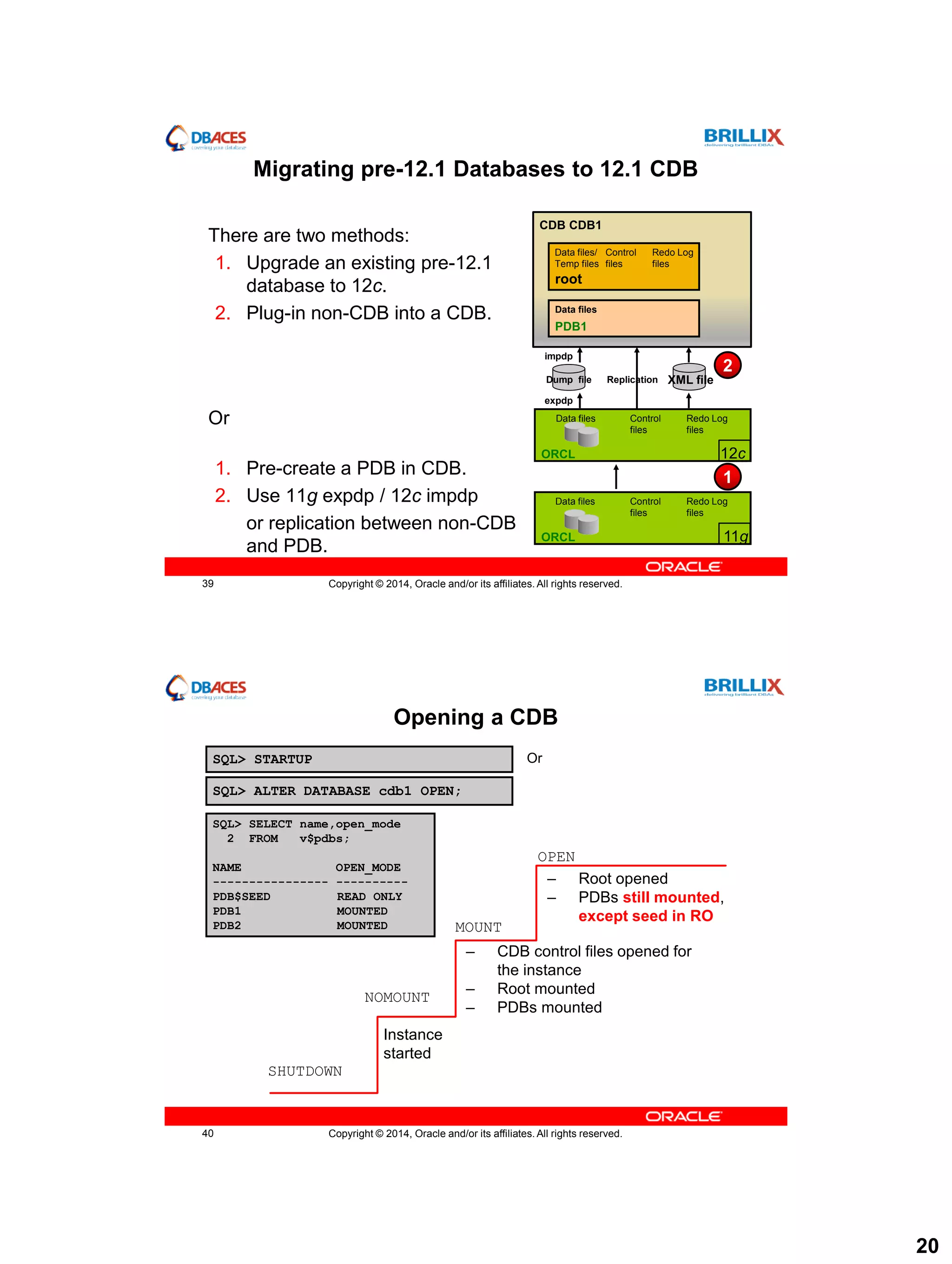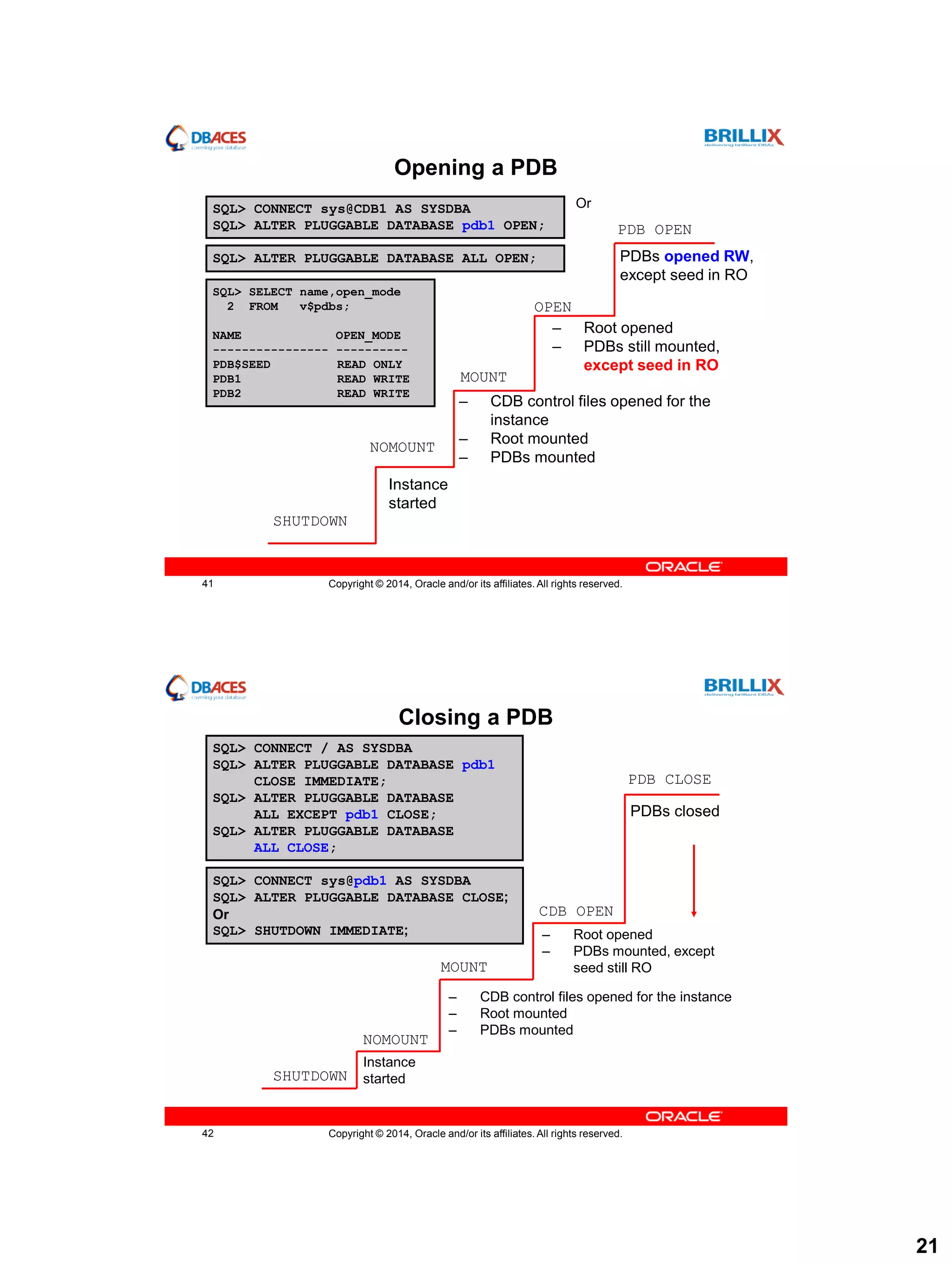The document discusses best practices for Oracle Database 12c Multitenant architecture. It begins by introducing the speaker and their company Brillix-DBAces. It then provides an overview of the Multitenant Container Database architecture in 12c, including the root and pluggable database containers, common vs local users/roles/privileges, and tools for working with Container Databases like SQL*Plus, DBCA, and Enterprise Manager.
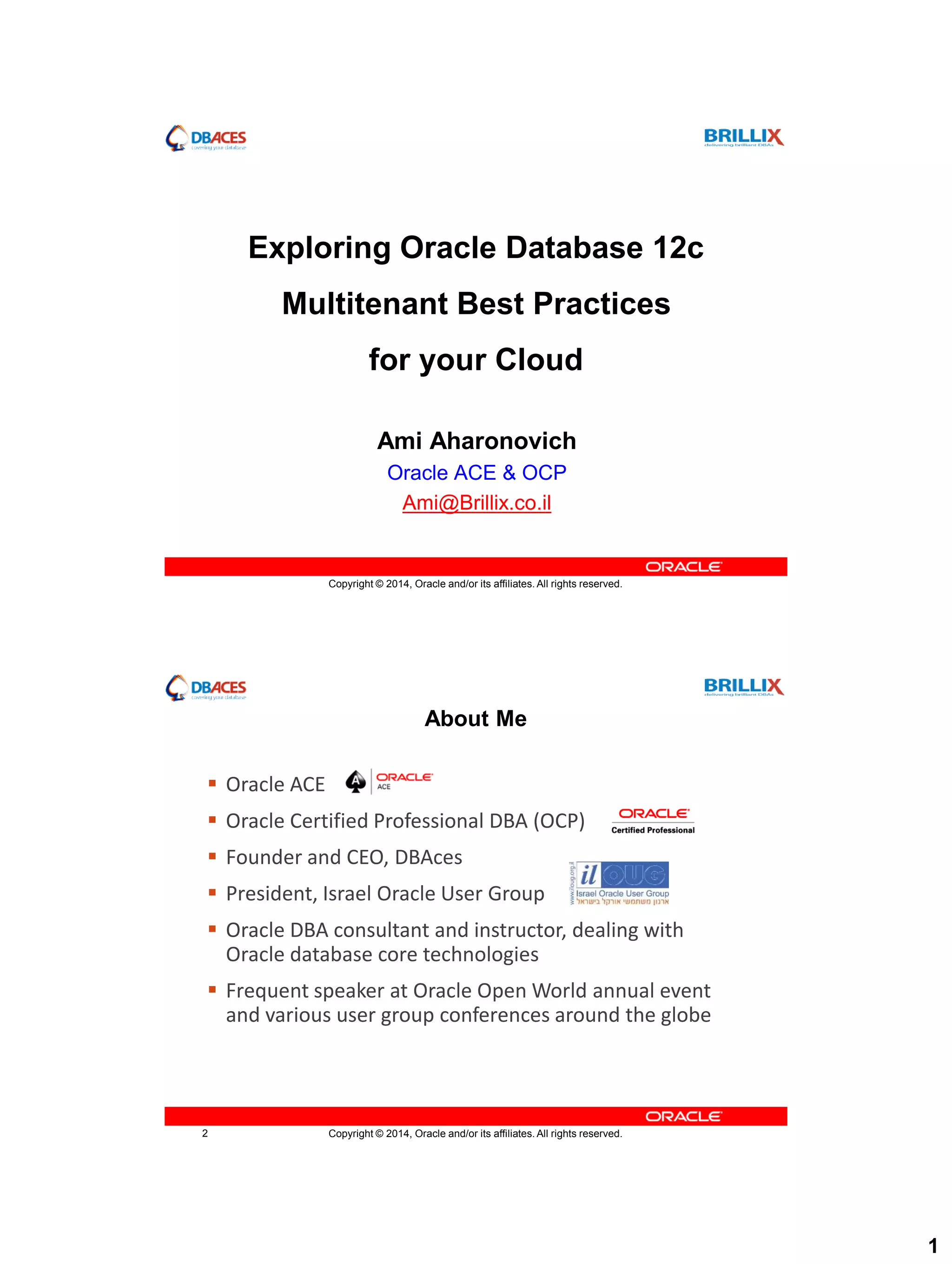
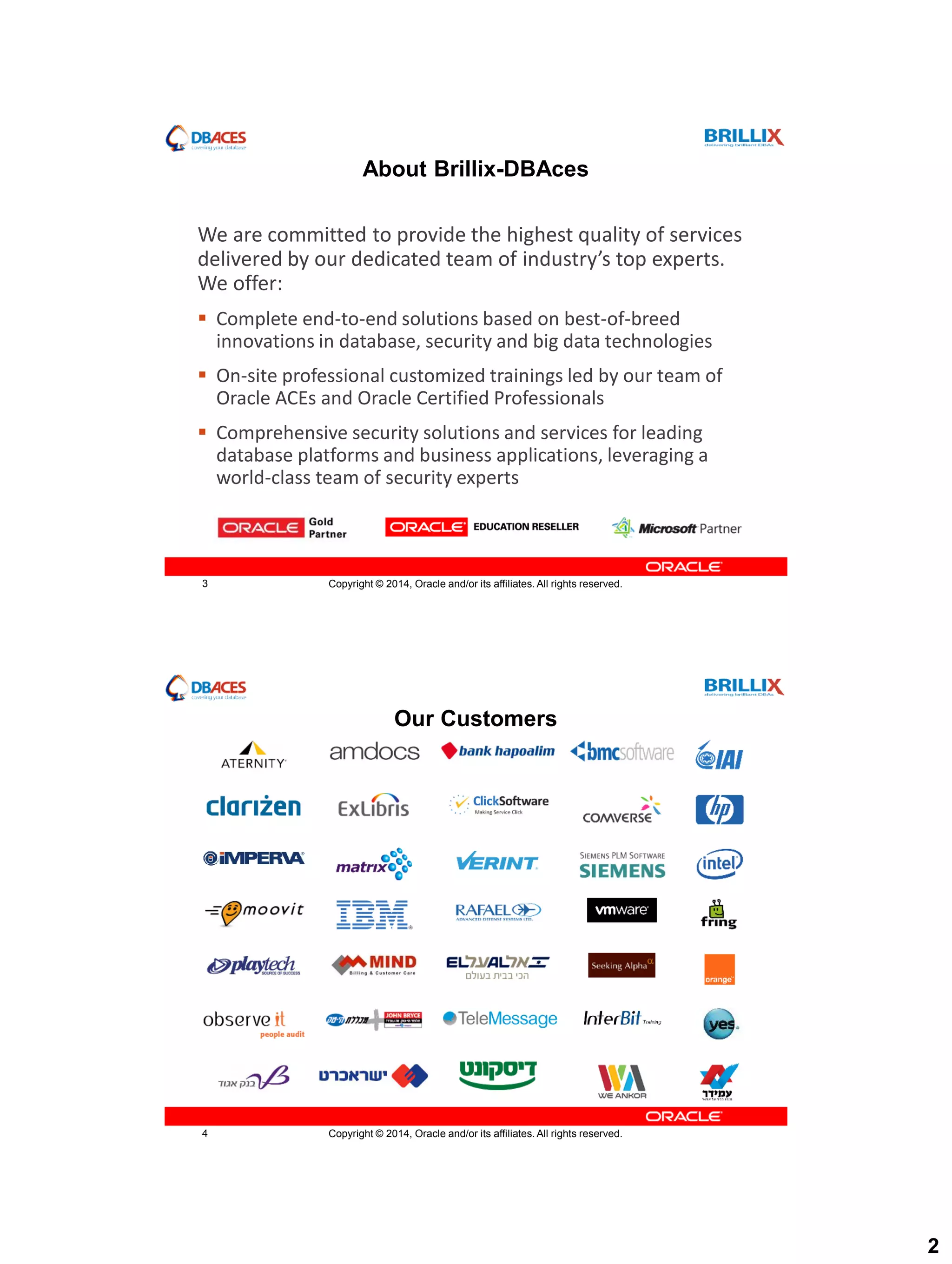














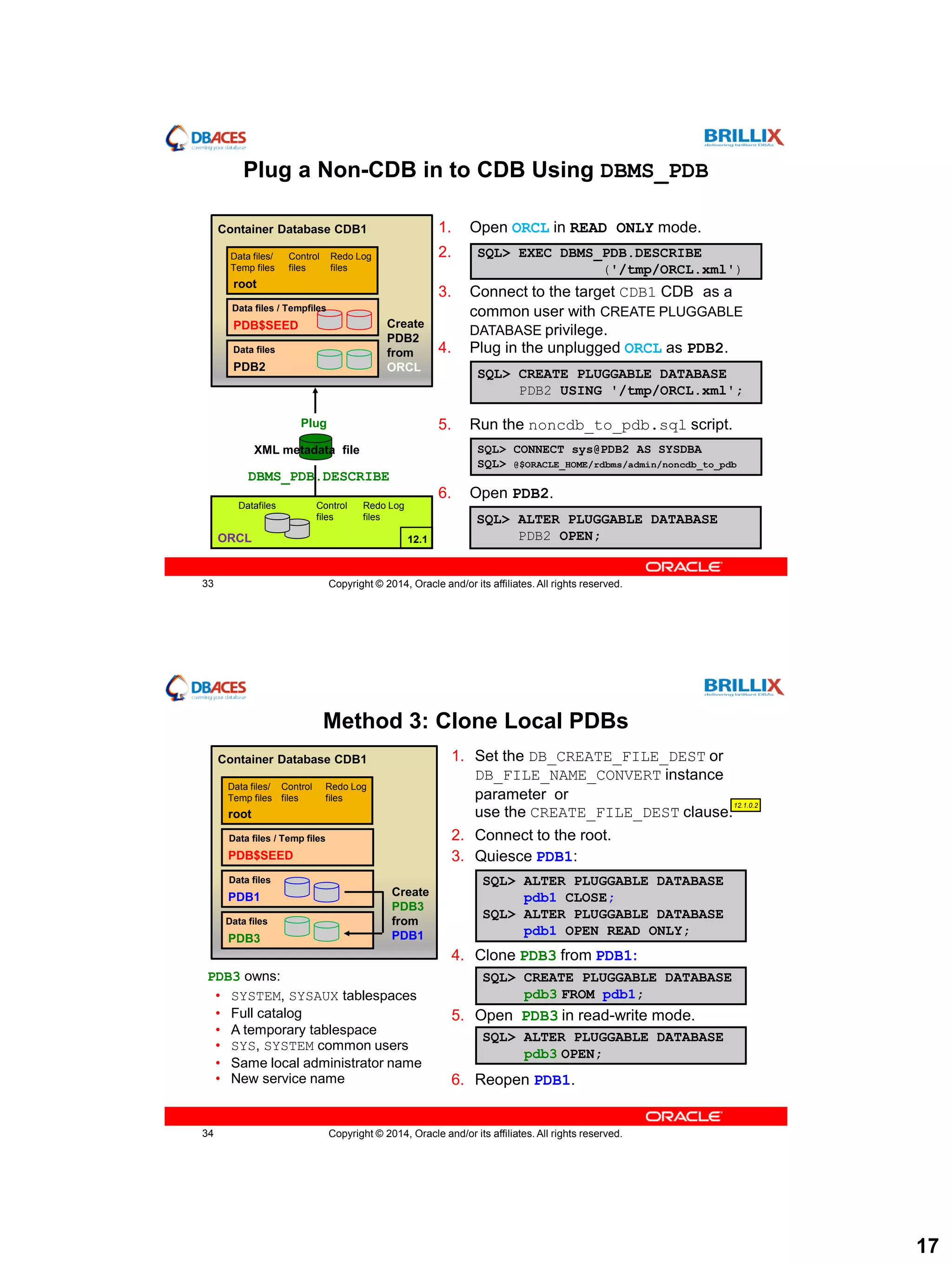

![19
Copyright © 2014, Oracle and/or its affiliates. All rights reserved.37
Plug Sample Schemas PDB: Using DBCA
1
2
3
4
Plug a new PDB with
Sample Schemas
using a PDB File Set
Copyright © 2014, Oracle and/or its affiliates. All rights reserved.38
Dropping a PDB
Container Database CDB1
root
Data files/
Temp files
Redo Log
files
Control
files
File2
TEMP
PDB$SEED
Data files
File5
File6 File7
File4
File1
File3
PDB1
Data files
File8 Drop PDB1
• Updates control files
• If INCLUDING DATAFILES:
– Removes PDB1 datafiles
• If KEEP DATAFILES (default):
– Retain data files
– Can be plugged in another or
the same CDB
• Requires SYSDBA privilege
• Cannot drop seed PDB
File9 File10
PDB4
Data files
SQL> ALTER PLUGGABLE DATABASE
pdb1 CLOSE;
SQL> DROP PLUGGABLE DATABASE
pdb1 [INCLUDING DATAFILES];…
File7
File8
File9
File10
…](https://image.slidesharecdn.com/multitenant-160207205055/75/Exploring-Oracle-Database-12c-Multitenant-best-practices-for-your-Cloud-19-2048.jpg)
